Discover the Magic of the Mustard Seeds Tree
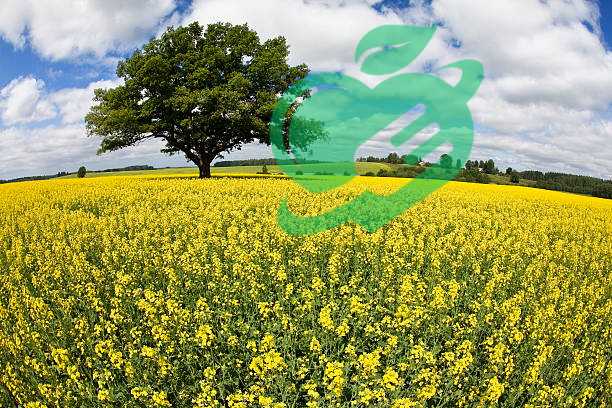
Overview of Mustard Seeds Tree
The mustard seeds tree, scientifically known as Brassica nigra, is a remarkable plant that holds a significant place in both culinary and agricultural traditions. Often recognized by its vibrant yellow flowers and small, round seeds, this plant captures the interest of farmers and food enthusiasts alike. As you explore its properties, you’ll appreciate not just its value as a spice but also its role in various cultural contexts. For those who might be new to mustard seeds, these tiny powerhouses are not just for seasoning. They belong to the brassica family and can grow in a variety of environments. The mustard seeds tree plays a vital role in supporting biodiversity and improving soil health, making it an essential crop in sustainable agriculture. You might find it fascinating that, in many regions, mustard seeds have historical significance, often seen in ancient texts and folklore.
Botanical Description
Let’s delve deeper into the botanical aspects of the mustard seeds tree to understand its structure better. This shrub typically reaches heights of about 1-3 feet, although under optimal conditions, it may grow taller. The plant features:
- Leaves: The leaves are generally lobed or serrated and can vary in color from green to purplish hues, with a robust texture.
- Flowers: The mustard flower, with its characteristic bright yellow color, blooms in clusters, attracting beneficial insects like bees and butterflies.
- Fruits: After fertilization, the flowers develop into pods that contain the seeds. These pods can hold numerous seeds, making the mustard seeds tree highly prolific.
- Seeds: The small brown, black, or yellow seeds are what lend their unique flavor and nutrition to cuisines worldwide.
In terms of habitat, the mustard seeds tree thrives in well-drained soil rich in nutrients. It prefers full sun exposure, though it can tolerate partial shade. These trees can withstand various climatic conditions, though moderate temperatures yield the best results. Historically, mustard seeds have been cultivated since ancient times, and found in archaeological sites dating back thousands of years, which speaks volumes about their enduring popularity and utility.
It’s interesting to note that despite their small size, mustard seeds have been used as a symbol of faith and growth in many cultures—as found in biblical references where a mustard seed symbolizes the potential for great things to emerge from small beginnings. In conclusion, the mustard seeds tree is an extraordinary botanical wonder. Its impressive growth, nutritional benefits, and cultural significance make it an intriguing subject worth exploring further. The next sections will unveil its health benefits and culinary applications, keeping the exploration momentum thriving!
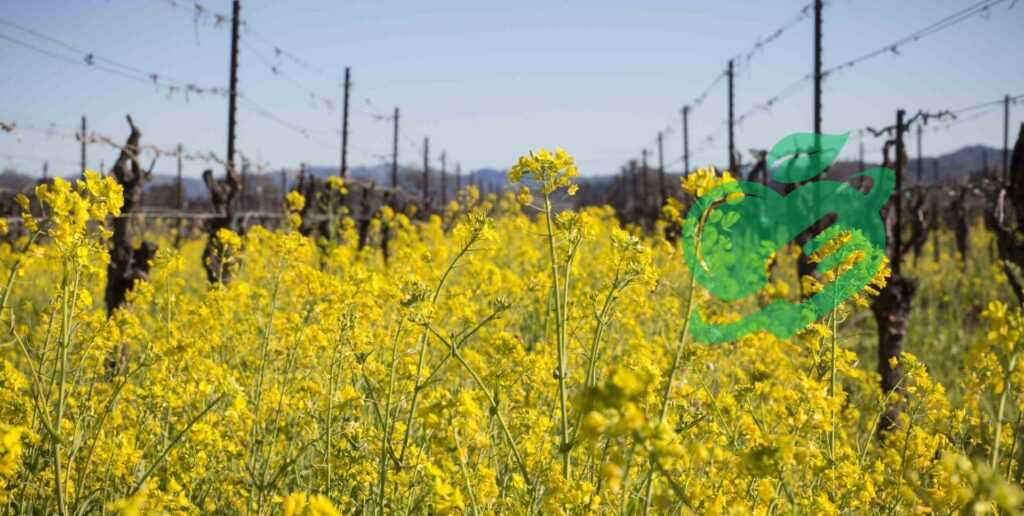
Health Benefits of Mustard Seeds Tree
As we transition into the remarkable health benefits of the mustard seeds tree, it’s essential to recognize the powerhouse that these tiny seeds represent. Mustard seeds are not just an ingredient in your spice cabinet; they are a source of essential nutrients that can contribute positively to your well-being. To paint a clearer picture, here’s a snapshot of the nutritional value of mustard seeds:
- Vitamins: Mustard seeds are rich in vitamins such as Vitamin A, Vitamin C, and several B vitamins, which play crucial roles in metabolism and skin health.
- Minerals: They contain essential minerals like calcium, magnesium, phosphorus, and potassium, which contribute to bone health and proper nerve function.
- Fiber: The high fiber content in mustard seeds promotes digestive health, making it easier to maintain a balanced gut.
- Antioxidants: Mustard seeds are packed with antioxidants, which help combat oxidative stress and support overall health.
It’s worth noting that incorporating a small amount of mustard seeds into your daily diet can lead to impressive health benefits. For instance, adding a teaspoon of mustard seeds to your salad can enhance the flavor while boosting your nutrient intake significantly.
Medicinal Uses
Beyond their nutritional prowess, mustard seeds have been utilized for their medicinal properties for centuries. Many cultures have harnessed the health benefits of mustard seeds, using them in traditional remedies. Here are some commonly recognized medicinal uses:
- Anti-inflammatory Properties: Mustard seeds have compounds that can help reduce inflammation in the body, making them useful for alleviating conditions like arthritis.
- Digestive Aid: The mustard seed can stimulate gastric juices, enhancing digestion. A warm mustard seed oil massage on the abdomen can also relieve gas and bloating.
- Respiratory Relief: Traditionally, mustard seeds have been used to manage respiratory issues like bronchitis and asthma. Inhaling steam infused with mustard seeds can help ease congestion.
- Heart Health: Some studies suggest that mustard seeds may help lower cholesterol levels and improve heart health due to their omega-3 fatty acid content. 1.
Personal anecdotes highlight the value of mustard seeds in everyday health regimens. For instance, many families from different cultural backgrounds have their secret mustard seed concoctions for treating common colds, showcasing how these small seeds can yield significant results. In conclusion, the mustard seeds tree offers substantial health benefits, rooted in its nutritional value and medicinal uses. As we venture into discussing the culinary applications, you’ll find that combining these seeds in your meals not only enhances flavors but also contributes to a healthier lifestyle. So, get ready to discover how to ignite your culinary creativity with this spectacular seed!
Read also: Black Seed: Diverse Benefits and Uses in Traditional and Modern Medicine
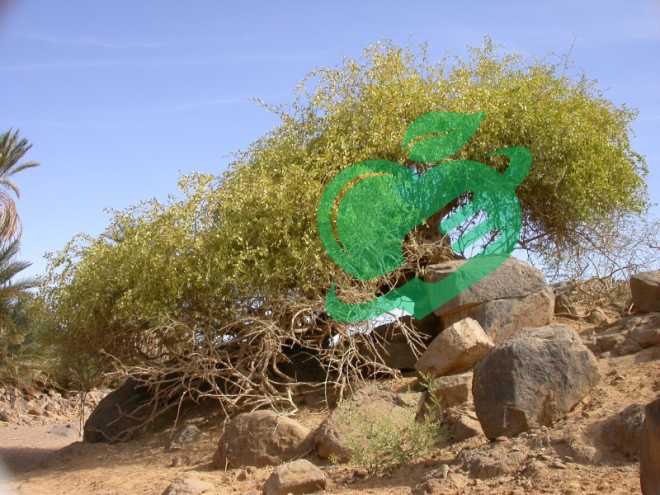
Culinary Uses
Continuing our exploration of the mustard seeds tree, we now dive into its culinary applications. Mustard seeds not only offer robust health benefits but also bring a unique flavor to a variety of dishes. These little seeds can be a game changer in the kitchen, adding depth and character to your meals. When cooking with mustard seeds, it’s important to understand their distinct flavor profile. They can be earthy, nutty, and sometimes slightly spicy, depending on the variety. Here are some popular ways to use mustard seeds in your cooking:
- Tempering: One of the most common methods is tempering. Heat some oil in a pan, add mustard seeds, and let them pop. This releases their essential oils, enhancing the flavors of your dishes. It’s an excellent starting point for soups, stews, or sautéed vegetables.
- Dressings and Marinades: Ground mustard seeds can elevate salad dressings or marinades. Simply mix with oil, vinegar, and your choice of herbs and spices for a delightful tangy flavor.
- Pickling: Mustard seeds are a staple in pickling recipes, adding a unique crunch and flavor. If you’ve ever tried homemade pickles, you’ve likely encountered mustard seeds enhancing the taste.
- Baking: Surprisingly, mustard seeds can even be incorporated into baked goods! They add an interesting twist to bread, especially when combined with other seeds.
As someone who enjoys cooking, I’ve found that adding a teaspoon of mustard seeds to sautéed vegetables not only amplifies the aroma but also sparks delightful conversations at the dinner table. The next time you cook, consider experimenting with mustard seeds to discover new tastes and textures.
Mustard Seeds in Traditional Cuisine
Mustard seeds have found their way into numerous traditional cuisines worldwide, showcasing their versatility and adaptability. From Indian to Mediterranean dishes, these seeds play an integral role in culinary heritage. In Indian cuisine, mustard seeds are a key ingredient in various dishes, such as:
- Curries: Mustard seeds are often used for tempering in popular dishes like sambar and rasam, which enhance the overall flavor and aroma.
- Pickles: Mustard oil, infused with mustard seeds, is a common medium for pickling vegetables, lending a distinctive sharpness.
- Chutneys: Ground mustard seeds are essential in various chutneys, providing a punch of flavor to accompany snacks.
Similarly, in Mediterranean cuisine, mustard seeds are ground to create mustard condiment variations, which are used for sandwiches, dressings, and marinades. The cultural significance of mustard seeds in traditional cuisine is a testament to their enduring appeal. I remember a family gathering where my grandmother would make a tangy mustard pickle that would pair perfectly with rice and curries, evoking nostalgia with every bite. In conclusion, the culinary uses of the mustard seeds tree are vast and varied. From enhancing everyday dishes to being a crucial component in traditional recipes, mustard seeds invite exploration in both the kitchen and on the dining table. As we continue, we’ll delve into the growing and caring for mustard seeds tree, enriching your knowledge and practice even further!
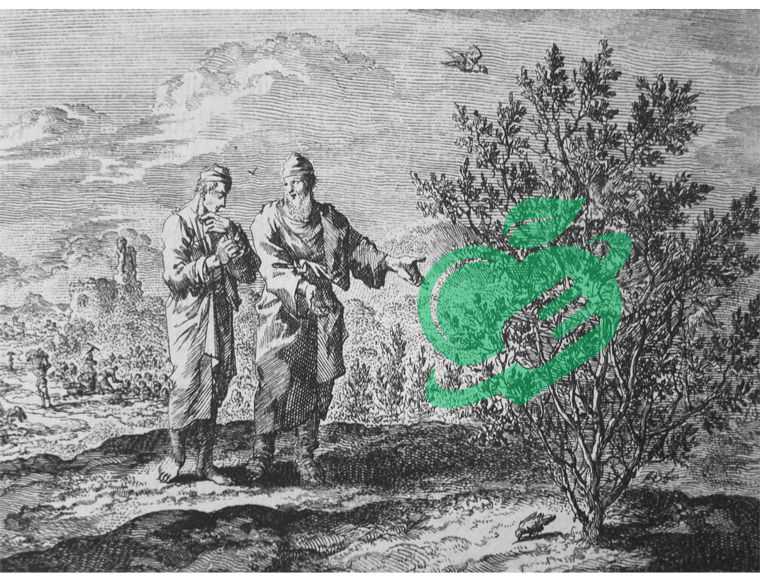
Growing and Caring for Mustard Seeds Tree
Having explored the culinary delights of the mustard seeds tree, it’s time to roll up your sleeves and dig into the practical aspects of growing this remarkable plant. Planting mustard seeds can be a rewarding experience for both novice gardeners and seasoned horticulturists alike. When planting mustard seeds, consider the following steps to ensure a successful start:
- Choose the Right Location: Mustard seeds thrive in well-drained soil with full sun exposure. Aim for an area where the soil doesn’t retain water, as mustard plants prefer moderately dry conditions.
- Soil Preparation: Before planting, loosen the soil to a depth of about 12 inches and mix in some organic compost. This enriches the soil with essential nutrients and improves drainage.
- Planting:
- Sow the seeds directly into the ground in early spring or fall, as these seeds prefer cool weather.
- Space the seeds about 1 inch apart and cover them lightly with soil—roughly 1/4 inch deep.
- Water gently after planting to avoid displacing the seeds.
- Optimal Conditions:
- Maintain soil moisture until the seeds germinate, which typically takes about 7-10 days.
- Ensure that temperatures range between 60°F and 70°F for best results.
A personal experience I recall is when I planted mustard seeds in my backyard garden. The anticipation of watching them sprout felt like nurturing a little piece of nature. With the right conditions, those initial tiny seeds flourished into a robust green oasis!
Read also: How to Make Chia Seed Water: A Step-by-Step Guide
Maintenance Tips for Mustard Seeds Tree
Once your mustard seeds are planted and germinated, caring for them is relatively straightforward. Here are some maintenance tips to help your mustard seeds tree thrive:
- Watering: While mustard plants require moisture, avoid overwatering. Water deeply but infrequently, allowing the top layer of soil to dry out between waterings.
- Weeding and Mulching: Regularly remove any weeds to prevent competition for nutrients. Applying mulch around the base can help retain moisture and suppress weed growth.
- Fertilization: Use a balanced fertilizer every few weeks, particularly during the growing season, to promote healthy growth. Organic fertilizers like compost or well-rotted manure work wonders for fostering a thriving environment.
- Pest Management: Keep an eye out for pests such as aphids or flea beetles. You can use natural remedies like neem oil spray or introduce beneficial insects such as ladybugs to help control pest populations.
- Harvesting: Once your plants flower and develop pods, it’s time to harvest. The seeds will mature in around 90-120 days. You can either gather the seeds from the pods or harvest the entire plant for a fresh culinary experience.
Maintaining a mustard seeds tree can be a fulfilling endeavor, bringing joy to your gardening journey. It provides a tangible connection to nature and the promise of delightful flavors to complement your kitchen creations. In our next section, we will explore the environmental impact of the mustard seeds tree, further illustrating its value beyond cultivation. Stay tuned!
Read also: Banana Tree Benefits: Why You Should Grow One Now
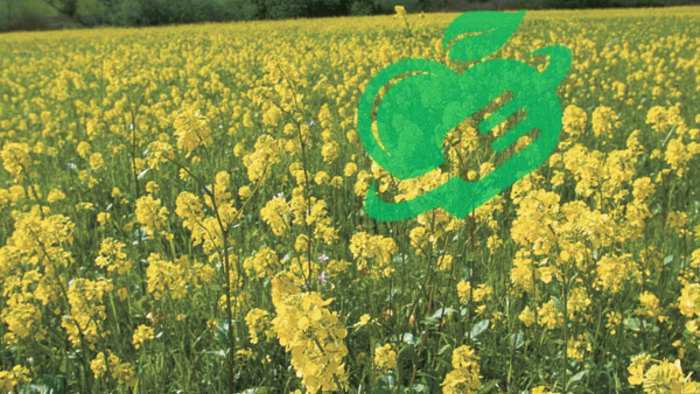
Environmental Impact
Continuing our exploration, it’s crucial to consider the environmental impact of the mustard seeds tree. Beyond its culinary and health benefits, this plant serves significant ecological roles. Understanding these benefits can deepen our appreciation for incorporating mustard seeds into our gardens and diets. One of the primary ecological advantages of mustard seed trees is their contribution to biodiversity. Here’s how they make a positive impact:
- Pollinator Attraction: The bright yellow flowers of mustard plants are highly attractive to various pollinators such as bees and butterflies. By planting mustard seeds, gardeners can help support local pollinator populations, which are critical for many other crops.
- Soil Health: Mustard seeds have deep roots that can help improve soil structure. Their growth contributes to the soil’s organic matter, which is essential for nutrient availability and water retention. Moreover, mustard plants are known to suppress weeds effectively.
- Nitrogen Fixation: Some varieties of mustard plants possess the ability to fix nitrogen in the soil, which enhances fertility. This trait makes mustard an excellent choice for crop rotation and cover cropping, benefiting the overall health of the ecosystem.
Reflecting on my time in the garden, I’ve often noticed an uptick in butterflies and other insects when my mustard plants bloom. It’s heartwarming to know that my gardening efforts are not just for my benefit but also for the broader ecosystem.
Sustainability of Mustard Seeds Tree
The sustainability of the mustard seeds tree also speaks to its increasing importance in modern agriculture. With an ever-evolving focus on sustainable gardening, mustard plants stand out for various reasons.
- Low Input Requirements: Mustard seeds can thrive in less-than-ideal soil conditions, requiring minimal fertilizers and pesticides. As a result, they provide a more eco-friendly option for farmers seeking sustainable practices.
- Crop Rotation Benefits: Due to their ability to improve soil health, mustard seeds are excellent for crop rotation. Farmers can plant mustard as a cover crop, which can be tilled back into the soil to increase organic matter and reduce erosion.
- Edible and Versatile: Unlike other specialized crops, mustard seeds can be utilized in various ways—culinary, oil production, and even as livestock feed. This versatility means that farmers can diversify their income streams, contributing to economic sustainability.
Additionally, mustard seeds are drought-resilient, making them an attractive option in regions prone to water scarcity. As someone with a keen interest in sustainable gardening, I find it encouraging that simple crops like mustard can contribute significantly to environmental health. In conclusion, the mustard seeds tree exemplifies the intertwined relationship between agriculture and ecology. Its ecological importance and sustainable benefits make it a prized addition to any garden or farming landscape. As we shift our focus to the cultural significance of mustard seeds, we will further uncover the rich historical patterns associated with this remarkable plant. Stay tuned for more insights!
Read also: Unlock the Secrets of the Oud Tree for Timeless Elegance
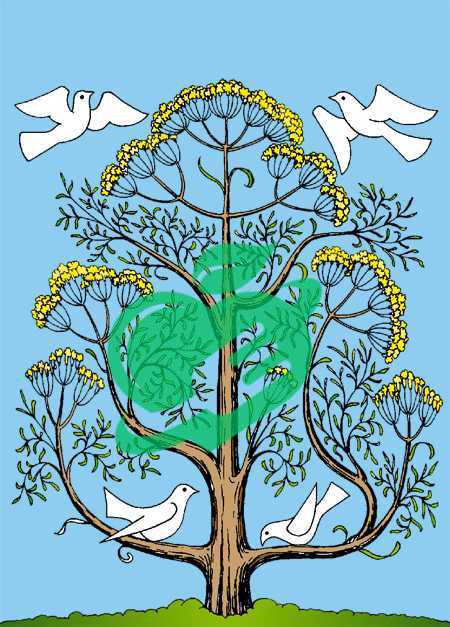
Cultural Significance
As we transition into the cultural significance of the mustard seeds tree, it’s fascinating to explore how this humble seed has woven its way into folklore and legends across various cultures. The mustard seed is often regarded as a symbol of growth, faith, and resilience, making it a cherished element in many stories. In many regions, the mustard seed is steeped in symbolism and often appears in folk tales. Here are a few notable legends associated with mustard seeds:
- The Parable of the Mustard Seed: One of the most renowned mentions of mustard seeds is in various religious texts, including the Bible. The mustard seed is presented as a metaphor for faith. In the Gospel of Matthew, it is said that if one has faith as small as a mustard seed, one can move mountains. This story illustrates the potential for great things to arise from seemingly insignificant beginnings.
- Harvest Festivals: In various cultures, mustard plants are celebrated during harvest festivals. Folk tales often recount how mustard seeds provided sustenance during tough times, symbolizing hope and survival. For instance, in some Indian villages, festivals feature mustard flowers, celebrating the bountiful harvest.
- Culinary Traditions: Mustard seeds also appear in folk medicine and traditional cooking stories. Elders often share tales of how their grandmothers used mustard seeds to ward off illnesses, highlighting the wisdom passed down through generations.
I recall a story my grandmother shared about how mustard seeds were a staple in her village, used not only in cooking but also as a source of medicinal remedies. It was a wonderful reminder of how these tiny seeds intertwined with the fabric of daily life.
Religious Symbolism of Mustard Seeds
Beyond folktales, the mustard seeds tree has significant religious symbolism in various traditions. Often viewed as a token of faith and growth, here’s how they feature in different belief systems:
- Christianity: As mentioned, the mustard seed symbolizes faith and the transformational power of belief. The imagery of a tiny seed growing into a large tree conveys the message of potential and growth.
- Buddhism: In Buddhist texts, mustard seeds are used as metaphors for the concept of emptiness and the idea that from the small and seemingly insignificant, much can arise. They serve as a reminder of the interconnectedness of all life.
- Hinduism: Mustard seeds play a role in various rituals and are considered auspicious. They are often used in religious offerings, and many traditional dishes incorporate them during festivals to symbolize prosperity and abundance.
In conclusion, the cultural significance of the mustard seeds tree extends well beyond the kitchen. From folklore and legends to religious symbolism, mustard seeds embody growth, resilience, and the deep connection between nature and humanity. As we wrap up this exploration of the mustard seeds tree, it serves as a reminder of the intricate ways in which plants influence our lives and the stories they carry. The journey of the mustard seeds tree inspires us to appreciate both its tangible benefits and its rich cultural heritage.
Summary of Benefits
As we wrap up our comprehensive exploration of the mustard seeds tree, it’s evident that this remarkable plant offers a multitude of benefits that extend far beyond mere culinary applications. Whether you’re a gardener, a foodie, or someone interested in sustainability, the mustard seeds tree is a treasure trove of advantages. To summarize, here are the key benefits we have discovered:
- Nutritional Powerhouse: Mustard seeds are packed with essential nutrients, including vitamins, minerals, antioxidants, and dietary fiber that promote overall health.
- Medicinal Qualities: With their anti-inflammatory, digestive, and respiratory benefits, mustard seeds have been utilized in traditional medicine for centuries, showcasing their healing properties.
- Culinary Versatility: From tempering and dressing to pickling and baking, mustard seeds can elevate a wide range of dishes, adding a unique flavor profile and culinary flair.
- Environmental Contribution: Mustard seeds play a role in supporting biodiversity, improving soil health, and offering sustainable farming solutions that contribute to a healthier ecosystem.
- Cultural Heritage: The mustard seed tree’s rich presence in folklore and religious practices illustrates its significance and the wisdom embedded in its use across generations.
Reflecting on everything learned in this journey, it’s clear that the mustard seeds tree deserves a special place in our gardens and kitchens. Remembering the fond memories tied to recipes and stories involving mustard seeds makes their benefits even more meaningful.
Read also: 10 Fascinating Facts About Dates Tree You Didn’t Know
Future Prospects and Research Opportunities
Looking ahead, the prospects for the mustard seeds tree are promising. With the increasing global focus on sustainable agriculture, there are several exciting research opportunities on the horizon:
- Enhanced Varietal Development: Research could focus on breeding mustard varieties that are more resilient to climate change, pests, and disease. This would ensure that farmers can still rely on mustard as a viable crop and keep our ecosystems balanced.
- Nutritional Research: Further studies could explore the specific health benefits of mustard seeds in combating lifestyle diseases such as diabetes, obesity, and cardiovascular issues, potentially leading to new dietary recommendations.
- Sustainable Practices: Investigating the role of mustard seeds in reduced-input farming methods may lead to more sustainable and eco-friendly agricultural practices, reinforcing the importance of crop rotations and the use of cover crops in farming systems.
- Cultural Studies: There’s room for deeper exploration of the cultural and historical significance of mustard seeds in various societies, documenting their legacy and adapting traditional practices to modern contexts.
Frequently asked questions
Is a mustard seed a tree?
Mustard plants do not develop into the traditional trees we envision, which have woody trunks, bark, and large branches; however, under favorable conditions, they can grow to a considerable size. 2.
What kind of mustard tree was Jesus talking about?
It is probable that Brassica nigra, commonly known as black mustard, grows in the eastern Mediterranean region, including Palestine and Israel, where Jesus Christ preached. This plant produces tiny seeds that measure approximately 1 mm and can develop into a large, branching plant or weed. 3.
Can you grow a mustard tree from seed?
Mustard can be cultivated from seeds or by using transplants. It can be planted once the soil temperature reaches 40°F. The seeds germinate most effectively between 55°F and 65°F, taking about 7 to 10 days to sprout. However, temperatures exceeding 80°F can hinder seed germination. 4.
Where can mustard trees grow?
Mustard trees thrive in various regions across the Middle East and Africa. Commonly located in dry, desert-like environments, they serve as a crucial food source for wildlife in these arid areas. Although they are frequently found close to water sources, mustard trees can endure with just 8 inches of water annually and are resilient in USDA zones 10-11. 5.
Are mustard trees edible?
The mustard plant is loaded with various nutrients. Its seeds and leaves are both consumable, making it a flexible component of your diet. 6.
Your body is a mirror of what you eat, so make your food your source of strength and health. Choose with love and awareness what nourishes your body and soul, and be a friend of nature and its colors on your plate, because proper nutrition is the key to a life full of energy and wellness.
Follow us constantly, as we strive to provide more useful articles and reliable information that make a difference in your daily life and help you achieve your health goals.
- carehospitals ((↩))
- churchofjesuschrist ((↩))
- quora ((↩))
- extension ((↩))
- garden.eco ((↩))
- healthline ((↩))



